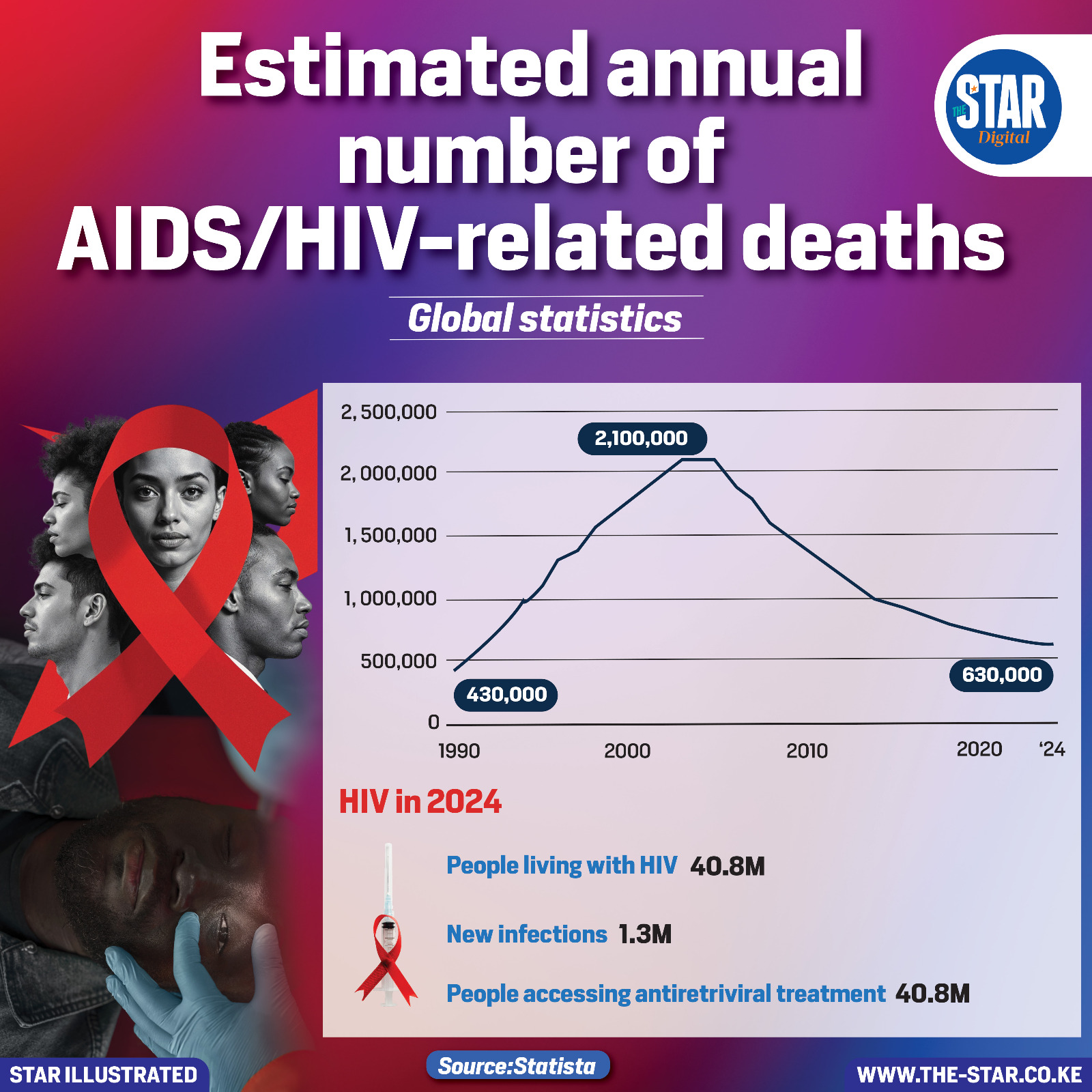

The global fight against HIV/AIDS has undergone a dramatic transformation over the past three decades, marked by both devastating losses and extraordinary progress.
According to global statistics, the estimated annual number of AIDS/HIV-related deaths shows a powerful story of resilience, scientific advancement, and expanding access to life-saving treatment.
In 1990, the world recorded approximately 430,000 deaths, a figure that quickly escalated as the epidemic tightened its grip.
By the early 2000s, mortality had reached crisis levels, peaking at 2.1 million deaths. This period reflected limited access to antiretroviral therapy, widespread stigma, and inadequate public health infrastructure in many regions.
However, the introduction and scale-up of antiretroviral treatment (ART) radically shifted the trajectory.
Consistent global investment, awareness campaigns, and improved testing and treatment services have contributed to a steady decline in deaths.
By 2024, the number had fallen to 630,000, the lowest in decades. Today, 40.8 million people are living with HIV, and a nearly equal number—also 40.8 million—are accessing antiretroviral therapy.
Despite this progress, challenges remain: 1.3 million new infections were recorded in 2024, signalling persistent gaps in prevention, education, and healthcare access.
















